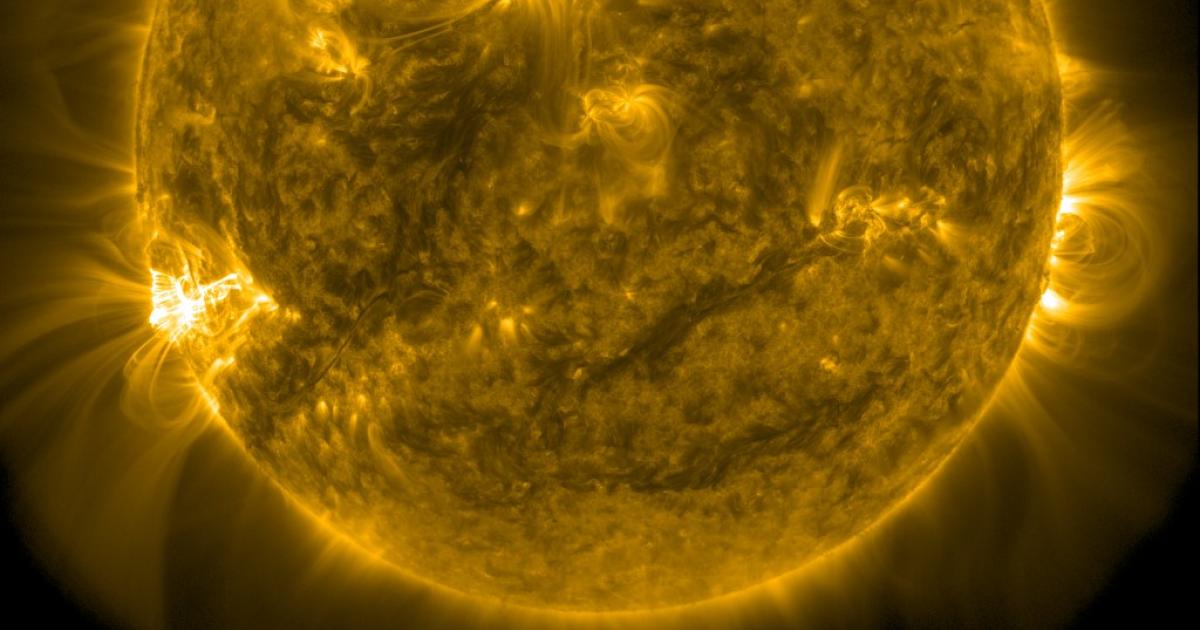In May it was confirmed Sunspot AR 13664 For 12 X-class solar flares in 6 days. The consequences can also be seen in Austria in the form of… Northern lights Watching. However, like the Earth, the Sun also rotates on its axis, which is why the area on the side of the Sun facing away from the Earth slowly disappears.
Sunspots are back
And now the sunspot is back again – with the new name AR 13697. The sunspot has got its new name tradition. In the past, it was not possible to trace sunspots on the back of the Sun, so it was never possible to be certain whether it was a known sunspot or not.
➤ Read more: How can you predict the Northern Lights?
across the ESA Solar Orbiter We can currently observe the back of the Sun continuously. According to the probe, AR 13664 or AR 13697 has been less active in recent weeks and reappeared on the Earth-facing side of the Sun on May 27. She lived up to her former reputation by getting one A solar flare of magnitude X2.9 I was born.
Solar flares are divided into categories based on radiation energy, with the X category being the highest of the four categories A, B, C, M, and X. The most powerful solar flare measured to date on November 4, 2003 achieved a rating of X45, and on May 14 the explosions reached a value of X8.7.
A coronal mass ejection is required for the aurora
The active region will continue to move across the Sun over the next two weeks and send its radiation toward Earth. Some can have explosions too Coronal mass ejection Trigger, where Charged particles It is thrown into space. When these particles reach the Earth's magnetic field, they can become… The geomagnetic storm and hence the northern lights Driving.
➤ Read more: The strongest solar storm since 2003: the northern lights also in Austria
Whether such explosions lead to auroras depends on the location of the sunspot and its direction toward Earth. AR 13697 stands in between June 4 and 6 are ideal for Earth. Explosions during this period will have the best chance of producing increased auroras on Earth.
How high is it? Likely How easy it is to see the aurora borealis also depends on other factors. The geomagnetic storm in May was very strong Many coronal mass ejections in a row Hit the ground. If each of these projectiles had struck the Earth separately, the impact would likely have been less dramatic.
Although there is a small chance of a repeat of the May event, AR 13697 is still a possibility Northern lights at high latitudes Care. Since solar activity reaches End of 2024/beginning of 2025 The rise is likely to continue, and it is possible that we will enjoy the northern lights again in Austria this year.

“Social media evangelist. Baconaholic. Devoted reader. Twitter scholar. Avid coffee trailblazer.”







More Stories
These brands are most vulnerable to phishing scams
Apple Maps Now Has a Web Version and Wants to Challenge Google Maps
Best AirDrop Alternatives for Android